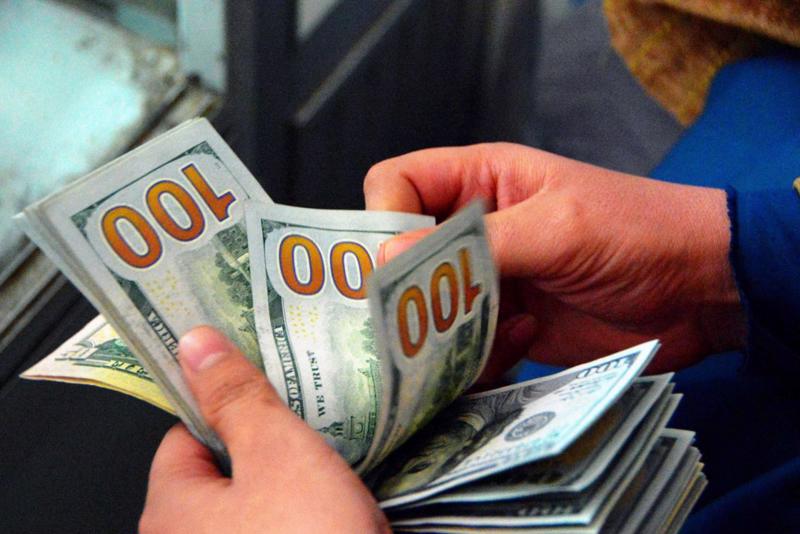How far could the US dollar go in 2025?
The US dollar has continued its strong start to 2025, and many analysts doubt that this is likely to end at all soon.

The US dollar has continued to forge ahead, and many analysts doubt that this is likely to end soon even if data on speculative positioning by traders suggests that the market is very bullish and hence ripe for at least a temporary correction. The key is the prospect of US tariffs. They tend to believe that currencies will move the most when asymmetric disturbances occur.
The last of these was the war in Ukraine, as this lifted European energy prices drastically compared to those in the US. The resultant terms of trade deterioration in Europe pulled these currencies down significantly. Other asymmetries include the divergence in monetary policy between Japan and the rest of the world in recent years, which has put the yen under pressure. As we look ahead, the key asymmetry that seems likely to arise comes from the imposition of US tariffs.
Now, of course, it is possible, even probable, that target countries will respond with tariffs of their own and so eliminate the asymmetry. But this is not certain, and even if they do, Steven Barrow, Head of Standard Bank G10 Strategy suspected that US tariffs would prove the most onerous. A complementary factor here is that the relative robustness of the US economy suggests that tariffs are more likely to induce a relative tightening of Fed policy compared to any other tariffed countries. This too could aid the US dollar.
Indeed, we have already seen the Fed suggest that such action is possible. Right now, we are in a period where president-elect Trump is making tariff threats. These could come at any time and, as long as this risk exits, it seems unwise to short the dollar even if bullish-dollar positioning seems stretched. We find it particularly notable that Trump has not focused his gaze on China yet.
To date, tariff threats have been made against Canada and Mexico because Trump wants these countries to tighten up border security, and the EU, where Trump wants the region to buy more US oil. But China was always the pre-election focus for tariffs, as the 60% figure quoted was clearly much higher than anything mentioned for other countries. It is surely only a matter of time before Trump reignites these tariff threats against China, and at that point, Steven Barrow might expect the US dollar to surge again, if only against the renminbi. So how far could the US dollar go?
“We still feel that 8.0 against the Renminbi is very achievable. That’s based in part on how the renminbi weakened against the dollar when far-less punitive US tariffs were introduced in 2018. For the euro, a slide to and through parity would seem to beckon. We target 0.95 over the next few months, particularly if Trump’s tariff bite turns out to be as bad, or worse, than his pre-election bark”, said Steven Barrow.
As for sterling, the Standard Bank adjusted its forecasts for sterling/US dollar down at the end of last year, pushing its three-month forecast down from 1.22 to 1.16 at a time when sterling was in the mid-1.20s. That might have seemed an aggressive call at the time to predict a decline of 10 cents in the pound over a three month period but, given how the pound has traded in the past week it looks a bit more reasonable. Importantly, this slide has not just been a function of dollar strength but also sterling weakness.
In Steven Barrow’s view that’s not because anything has gone particularly wrong in the UK but, instead, down to the fact that the rise in treasury yields – and concomitant rise in gilt yields – exposes both the tightness of budget calculations in the UK and the dependence of the UK on foreign inflows into the gilt market (overseas investors hold around 30% of the gilt market). Of course, that’s similar to the foreign holdings of treasuries but what we are seeing here is that, while the US and UK are vulnerable to foreign capital flight given their twin deficits, the UK suffers disproportionately.
In short, the UK suffers for the US’s budgetary foibles, and hence a part of the pound’s weakness is really out of the UK government’s control. That part that it can control, or at least influence—the budget—is coming under increased scrutiny, and there is undoubtedly the risk that a vicious circle develops here in which the government is forced into more budgetary consolidation to appease investors that merely serves to undermine growth and ultimately weighs on foreign confidence even more. However, it is not a trap that Steven Barrow thinks will ensnare the pound, and he does see a recovery to 1.30-plus over the next year, or so.








